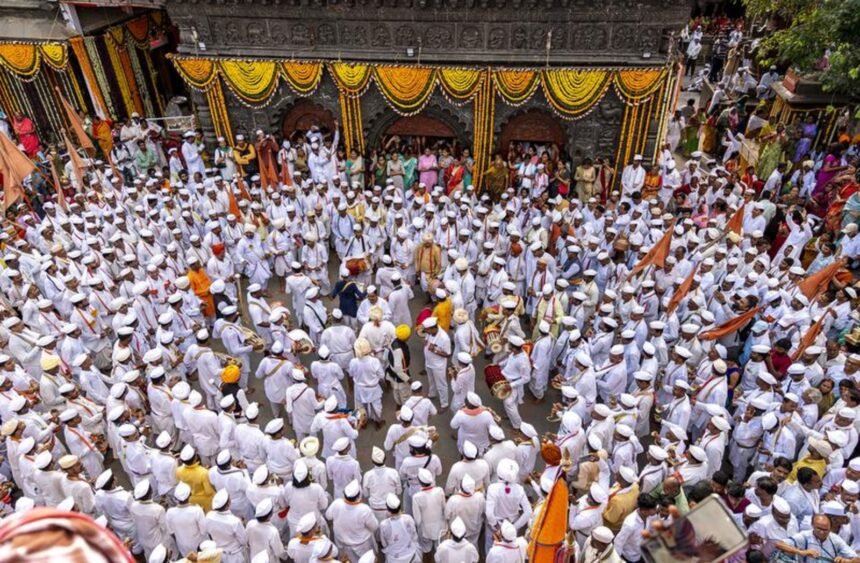Every year, tens of thousands of pilgrims known as “warkaris” embark on a sacred journey to Pandharpur in Maharashtra, India, to honor the deity Vitthal, also known as Vithoba. This pilgrimage, known as Dindi, can span up to 21 days.
The Dindi pilgrimage culminates on Ashadhi Ekadashi, a significant day in the Hindu calendar, which fell on June 29th this year. The tradition of the warkaris dates back 700 to 800 years, although the exact origin is unclear. Various theories attribute its growth to influential figures such as Viththalpant Kulkarni, Saint Dnyaneshwar, Saint Tukaram, and Narayan Maharaj.
The term “warkari” is derived from the combination of two words. “War” is an abbreviation of “wari,” meaning pilgrimage, and “kari” refers to the one who performs the pilgrimage. The pilgrimages that originate from the shrines of saints Dnyaneshwar and Tukaram are the most renowned, drawing the largest number of participants.
During the pilgrimage, warkaris walk a distance of approximately 250 kilometers over three weeks, traversing the districts of Pune, Satara, and Solapur in Maharashtra. Along the way, they engage in spiritual practices such as chanting the Lord’s name (nam japa), singing holy songs (abhang), and reading sacred texts (haripath).
Carrying palanquins adorned with footprints of the saints, the warkaris strive to reach Pandharpur on the auspicious day of Ashadhi Ekadashi. Upon arrival in the temple town, they offer prayers and complete their journey by taking a sacred dip in the river Chandrabhaga.
The warkari pilgrimage holds immense cultural and religious significance, reflecting the deep devotion and faith of the participants. It is a time for spiritual reflection, communal bonding, and the celebration of shared traditions, making it a revered event in the cultural fabric of Maharashtra.






